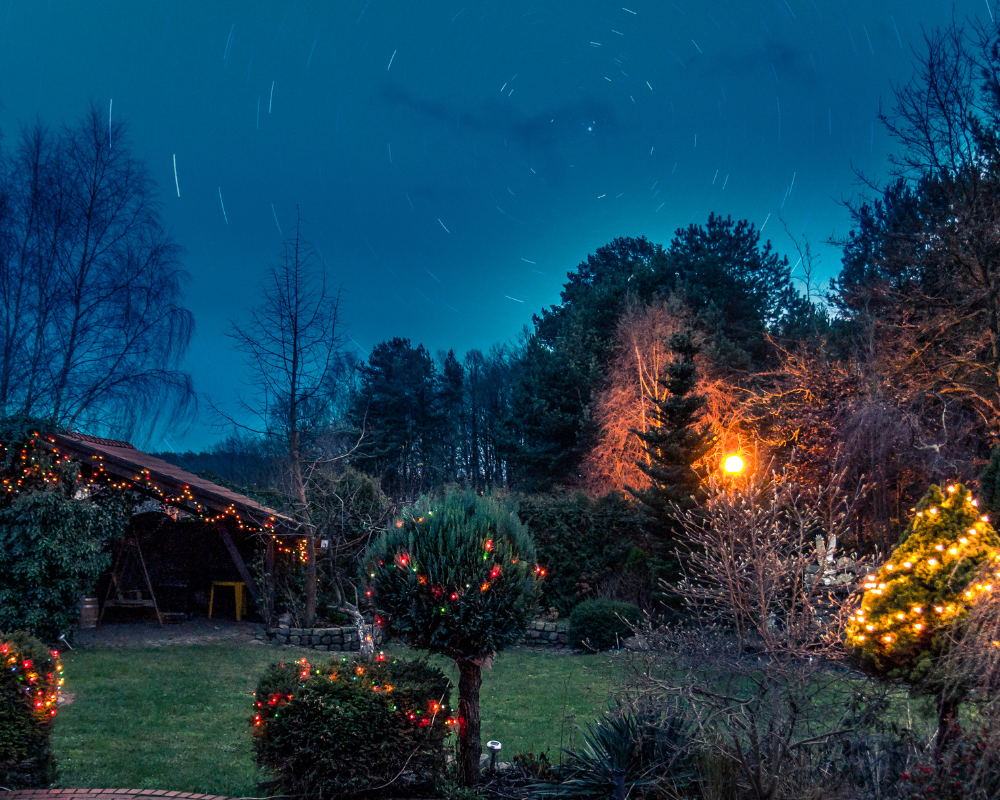Winter Wonderland Eco-Friendly Garden
Table of Contents
As the cold winds blow many gardeners with a little creativity and effort, can transform the outdoor space into a winter wonderland that’s not only beautiful but also an eco-friendly garden. We will explore some sustainable gardening tips and time-honored traditions to help create a vibrant and environmentally responsible winter area.
Choose Native Plants

Selecting native plants at this time of year for your winter garden is a sustainable choice. They are adapted to your local climate and require less water and maintenance. Native evergreen shrubs and trees like holly, juniper, and pine are excellent choices to provide structure and color throughout the winter season. They have evolved alongside local wildlife, providing important food and habitat sources for insects, birds, and other animals. By landscaping in winter in well-drained soil with native plants, you can support biodiversity even during the colder months when many other plant species are dormant.
Conservation of water is also helped by these winter interest plants as they are well-suited for their natural environment’s rainfall patterns. Instead of relying on excessive watering or artificial fertilizers like non-native species often do, they thrive without much intervention or chemical assistance.
Use Organic Mulch

If home gardeners add a layer of organic mulch to their soil it it will prove to be a great way to help conserve moisture, regulate soil temperature, and the best way to suppress weeds. Choose sustainable mulch options like wood chips, straw, or leaves. These materials will break down over time, enriching your soil naturally and reducing the need for synthetic fertilizers.
Implement Sustainable Hardscaping

Hardscaping refers to the non-living elements of a landscape, such as walkways, patios, and retaining walls. By choosing environmentally friendly materials and design practices, you can ensure that your hardscape not only enhances the beauty of your garden at ground level but also minimizes its impact on the environment.
One key aspect of sustainable hardscaping is using permeable materials for your pathways and driveways. Permeable paving allows water to infiltrate into the ground instead of contributing to stormwater runoff, which often carries pollutants into nearby water sources.
Another important consideration is selecting materials that are sourced sustainably or recycled. By using reclaimed bricks or stone pavers not only gives a unique character to your winter landscape but also reduces the demand for new materials and decreases carbon emissions associated with production. Also opting for locally sourced materials further reduces transportation costs and good news supports local businesses.
Attract Wildlife

Creating an eco-friendly winter garden is not only visually appealing but also attracts a myriad of wildlife. Incorporating native plants into your garden can provide food, shelter, and nesting opportunities.
Install bird feeders, handmade ornaments and birdhouses to attract various avian visitors. Offering a variety of seeds and nuts will attract different bird species with diverse feeding preferences. Squirrels can also add entertainment to your winter garden, so embrace their festive vibes presence by providing squirrel feeders filled with tasty treats like peanuts or sunflower seeds. Be sure to also provide fresh water for birds and other wildlife as well.
Compost Wisely

Composting your garden and kitchen food waste not only reduces landfills but also provides nutrient-rich compost to improve your soil. During the cooler temperatures of the holiday season, maintain your compost pile by covering it to retain heat and encourage decomposition. This will give you valuable material to enrich your garden beds when early spring arrives.
As the cold temperatures can slow down the decomposition process, composting during the winter may require a bit more effort. With some careful planning of a sunny spot in the perfect place you can still create rich compost that will benefit your plants come springtime. One tip is to focus on new additions of green materials such as fruit and vegetable peels or coffee grounds which are high in nitrogen. These materials will generate heat as they decompose and help keep your compost pile warm.
Another consideration when composting in the winter is moisture control. While freezing temperatures may cause excess moisture to be retained within your pile, it’s important not to let it become too wet or too dry. To prevent excessive wetness, ensure there is proper drainage at the bottom of your compost bin or heap. Cover your pile with a tarp or lid will help to protect it from heavy rain or snow while still allowing necessary airflow.
Select Energy-Efficient Garden Lighting



If you enjoy your garden during the dark evenings in the winter months or possibly New Year’s Eve with family members, opt for energy-efficient outdoor lighting. LED lights are a beautiful addition and sustainable choice because they use less electricity and have a longer lifespan than traditional bulbs. Consider solar-powered lights to reduce your carbon footprint and energy costs.
Practice Eco-Friendly Snow Removal

When snow blankets your garden, use eco-friendly methods for snow removal. Have you ever stopped to consider the impact that traditional snow removal methods have on the environment? Avoid using rock salt as the chemicals in this de-icing agent can seep into the soil and waterways, causing harm to plants and wildlife.
One of the simplest ways to go green with your snow removal is by using environmentally friendly de-icers. Look for products that are labelled as biodegradable and made from natural materials like calcium magnesium acetate or potassium chloride. These options offer effective ice melt without leaving behind harmful residues. Additionally, using sand instead of chemical-based de-icers can provide traction while being gentle on plants and surrounding ecosystems.
Another eco-friendly approach to snow removal involves clearing your pathways manually rather than relying solely on machines. While it may be more time-consuming, using a shovel instead of a gas-powered snow blower will significantly reduce your carbon footprint.
Conserve Water

In late winter, plants require less water than in the warmer months. Adjust your watering schedule accordingly and to maximize water conservation efforts, employ harvesting techniques collecting water through barrels or cisterns. This system allows you to utilize the water on demand rather than relying solely on tap water for irrigation purposes and also assists in reducing utility bills in the process.
Conclusion
Creating an eco-friendly winter garden is not only a beautiful way to enjoy the outdoor season but also a responsible way to care for the environment. Embrace these eco-conscious gardening tips and watch your garden thrive while reducing your ecological footprint.



